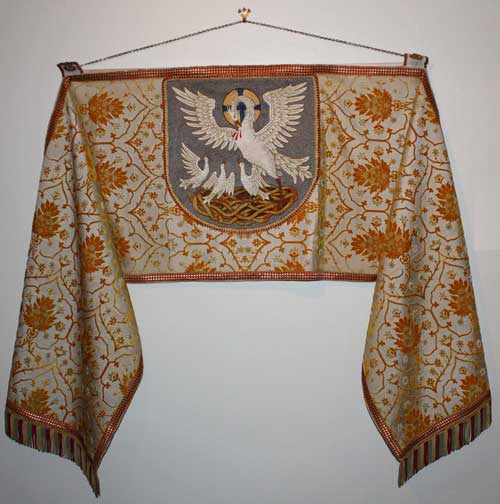Humeral Veil

Humeral Veil
Benziger Brothers?
United States
Early 20th century
Courtesy Santa Fe Institute
The Humeral Veil is a long rectangular cloth, traditionally made of silk, linen, or other fine material, worn across the shoulders by members of the clergy in a number of liturgical services. Its primary function is to honor, protect, or conceal from sight sacred objects or vessels when not in use during the liturgy. Among the most common examples : the Subdeacon conceals the paten under the veil when it is not in use during the solemn celebration of the Eucharist. The pyx or ciborium containing the Blessed Sacrament is concealed beneath the folds of the Humeral Veil when it is being carried to and from the Tabernacle. A priest typically wears a Humeral Veil when handling the Monstrance containing the Blessed Sacrament during processions, exposition or benediction services.
This example is made from a cream colored silk embellished with saffron or gold fluff in a lively repeated pattern. The Veil is bordered by a narrow galloon of red and gold checks; the ends are decorated by red, green, and gold silk twisted fringes. A two-part morse fashioned of gilt-metal clasps bearing stamped images of Jesus and Mary held the veil in place during use. The central embroidered shield depicts a particularly well observed example of a pelican in her piety, a traditional image of a popular legend that holds that the loving Pelican will nourish her young with her own heart's blood. Christians have long adopted this symbol as an allegory of Christ who shed his blood for the redemption of the world.
About Us | Contact Us
©2012 Graduate Theological Union Library